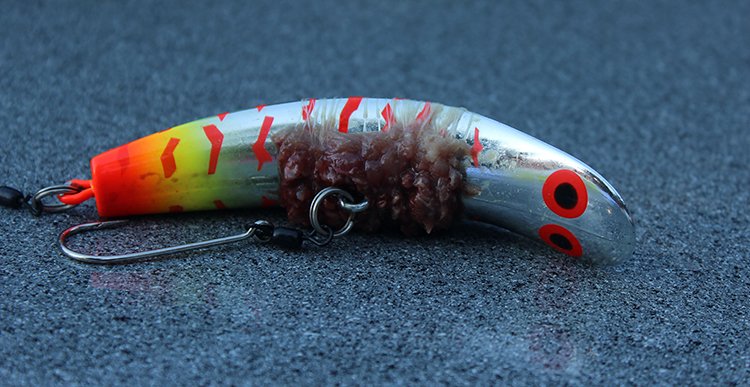Fishing for salmon with plugs is a popular and effective method that many anglers swear by. Plugs, which are designed to mimic the movement of baitfish, can attract salmon with their lifelike action and vibrant colors. This guide will walk you through the essential tips and techniques for using plugs for salmon fishing, ensuring you have a successful and enjoyable experience on the water.
Understanding Plugs for Salmon Fishing
Plugs for salmon fishing are hard-bodied lures that come in various shapes, sizes, and colors. They are designed to wobble and dart through the water, mimicking the movement of injured or fleeing baitfish. This action triggers the predatory instincts of salmon, making plugs an excellent choice for targeting these fish. Understanding the different types of plugs and how they work is crucial to your success.

How to Use Plugs for Salmon Fishing
Choosing the Right Plugs
Selecting the right plugs for salmon fishing is essential for increasing your chances of a catch. Here are some factors to consider:
- Size and Shape: Choose plugs that match the size and shape of the baitfish in the area you’re fishing. Larger plugs are suitable for bigger salmon, while smaller plugs can be effective for smaller species.
- Colour: The colour of your plug can make a significant difference. Bright colours like chartreuse, fluorescent pink, and silver are highly visible in various water conditions and can attract salmon from a distance.
- Action: Different plugs have different actions. Some wobble side-to-side, while others dive and dart. Experiment with different actions to see what works best in your fishing spot.
Rigging Plugs for Salmon Fishing
Rigging your plugs correctly is crucial for achieving the desired action and attracting salmon. Follow these steps for proper rigging:
- Attach to a Leader: Use a strong leader line to attach your plug to your main fishing line. This prevents the salmon from seeing the line and adds extra strength to handle their powerful runs.
- Use a Swivel: A swivel helps prevent line twists caused by the plug’s action. Attach a swivel between your leader and the main line to ensure smooth, tangle-free fishing.
- Add a Sinker: If you’re fishing in deeper waters, add a sinker to help your plug reach the desired depth. Attach the sinker above the swivel on your main line.
Techniques for Fishing with Plugs
Using the right techniques is key to effectively using plugs for salmon fishing. Here are some proven methods:
Trolling
Trolling is one of the most popular techniques for fishing with plugs. Slowly troll your boat while letting the plug swim behind it. Adjust your speed to achieve the desired action, and cover different depths by changing the length of your line.
Casting and Retrieving
Cast your plug into likely salmon-holding spots and retrieve it steadily. Vary your retrieval speed and add occasional pauses to imitate the erratic movement of injured baitfish, enticing salmon to strike.
Back-Trolling
In rivers, back-trolling involves positioning your boat upstream and allowing the current to push you downstream while the plug wobbles in front. This technique is effective for targeting salmon holding in deeper pools.
Best Locations for Using Plugs
Knowing where to use plugs for salmon fishing can significantly increase your success rate. Here are some prime locations:
- Rivers and Streams: Look for deep pools, undercut banks, and areas with slower currents where salmon are likely to hold. These spots provide excellent opportunities for using plugs.
- Estuaries and Bays: Estuaries and bays where rivers meet the ocean are prime feeding grounds for salmon. These areas are ideal for trolling or casting plugs.
- Near Structures: Salmon often gather near underwater structures such as rocks, logs, and ledges. These structures provide cover and attract baitfish, making them excellent spots to use plugs.
Tips for Success
To maximize your success when using plugs for salmon fishing, keep these tips in mind:
- Experiment with Depths: Vary the depth at which you fish your plugs until you find where the salmon are holding. Use a fish finder or depth gauge to assist you.
- Pay Attention to Conditions: Water temperature, clarity, and current can all affect salmon behaviour. Adjust your techniques and plug selection based on the current conditions.
- Be Patient and Persistent: Fishing with plugs can require patience. Keep experimenting with different plugs, actions, and locations until you find what works best.
Conclusion
Using plugs for salmon fishing is a highly effective method that can yield impressive results. By understanding the different types of plugs, rigging them correctly, and employing the right techniques, you can increase your chances of landing these prized fish. Remember to stay adaptable, be patient, and enjoy the process. With the right approach, you’ll soon experience the thrill of catching salmon with plugs. Happy fishing!



